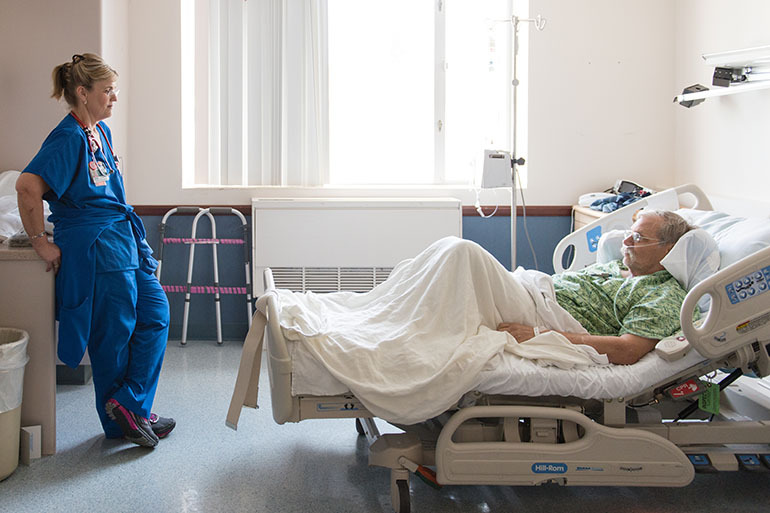
As sepsis remains a leading cause of death in hospitals, health systems across the country are adopting new tools to help detect the disease earlier and treat it more effectively.
Sacramento-based Sutter Health, for example, has witnessed meaningful benefits as a result of deploying Flosonics Medical’s wearable ultrasound device, which personalizes fluid management for patients with sepsis. Over the past year, Sutter has deployed Flosonics’ device across several departments at six of its hospital campuses.
Ontario-based Flosonics, which was founded 10 years ago, sells a small, wireless patch that sticks to a patient’s neck and measures their blood flow in real time. It takes less than three minutes to run an assessment and shows how a patient’s body will respond to IV fluids, said CEO Joe Eibl.
This device, called FloPatch, is simple to use, he noted. Eibl said that anyone on the care team — whether it’s a physician, physician assistant or nurse — can use the patch at the bedside.
He also pointed out that fluid overload is one of the most common and costly challenges in critical care. This happens when a patient is administered too much IV fluid, which can lead to serious problems like pulmonary edema or a longer ICU stay.
“The tricky part is that it’s not always easy to know who actually needs fluids and who doesn’t. Every patient is different, especially when they’re critically ill, and their needs can change quickly. Studies have shown that nearly one in three patients with sepsis are actually fluid unresponsive, meaning the fluids aren’t helping, and may be doing harm,” Eibl explained.
Being able to identify those patients earlier using FloPatch has been a gamechanger at Sutter, according to Dr. John Skovran, the emergency department medical director at Sutter’s Alta Bates Summit Medical Center in Oakland. He said the device does a good job of addressing the long-standing issue in fluid responsiveness — and it does so in a noninvasive way.
Sutter has been able to scale its use of the product rather quickly over the past year because nurses are having an easy time integrating it into their workflows, Dr. Skovran noted.
Nurses simply “pop it on the patient’s neck” and then the patch wirelessly connects to an iPad, where it gives clinical staff members a reading, with a threshold of 7 to guide fluid administration, he explained. The patch stays on for up to a week, allowing continued use throughout a patient’s hospital stay.
“Prior devices we used were very cumbersome. They were much more complicated in terms of how they physically attached to the body, how they got readings, and what you had to do to it to get a reading. So really, the nurses basically never looked at it, as it was a pretty Herculean task in order to get the information. Unfortunately, if you have a technology that’s not easy to use from a cultural perspective, even though it’s technically feasible to use it from a cultural perspective, it just never catches on,” Dr. Skovran remarked.
Flosonics’s tool saw more uses in one month than the previous devices did in several years, he added.
In his eyes, FloPatch is the first truly impactful technology to be introduced to his emergency department in quite a long time.
“It’s probably the only technology I can really think of in the last decade that has been new in the ED that I think is really leading to different outcomes in patient management,” Dr. Skovran declared.
Photo: (Heidi de Marco/KHN)






